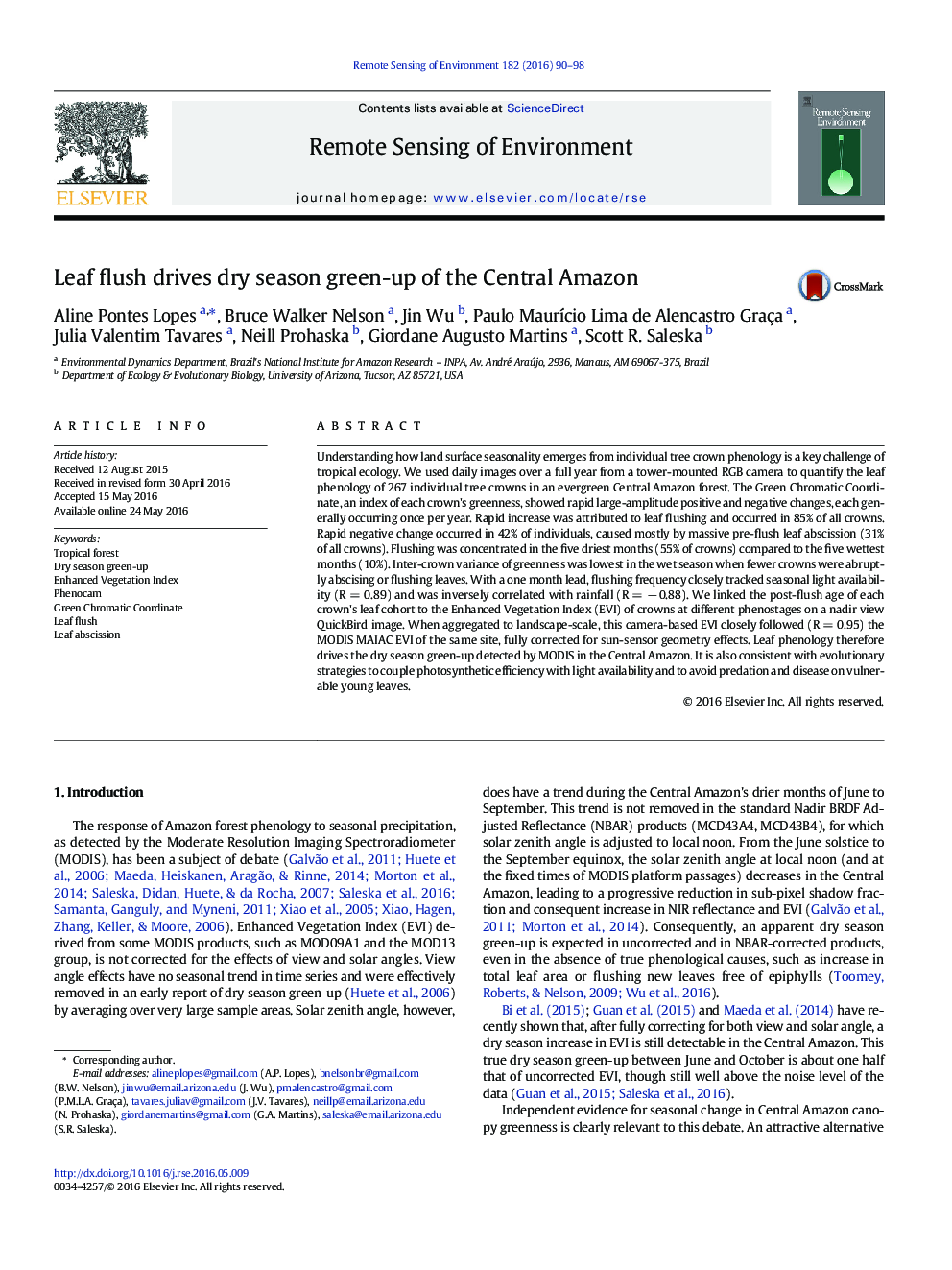| Article ID | Journal | Published Year | Pages | File Type |
|---|---|---|---|---|
| 6344909 | Remote Sensing of Environment | 2016 | 9 Pages |
â¢A tower-mounted camera monitored leaf phenology of 267 Amazon forest tree crowns.â¢Leaf flush and abscission were highly concentrated in the five driest months.â¢Lagged PAR and rainfall are highly correlated with frequency of flushing crowns.â¢Semi-synchronized age of crown leaf cohorts drives seasonality of Vegetation Index.
Understanding how land surface seasonality emerges from individual tree crown phenology is a key challenge of tropical ecology. We used daily images over a full year from a tower-mounted RGB camera to quantify the leaf phenology of 267 individual tree crowns in an evergreen Central Amazon forest. The Green Chromatic Coordinate, an index of each crown's greenness, showed rapid large-amplitude positive and negative changes, each generally occurring once per year. Rapid increase was attributed to leaf flushing and occurred in 85% of all crowns. Rapid negative change occurred in 42% of individuals, caused mostly by massive pre-flush leaf abscission (31% of all crowns). Flushing was concentrated in the five driest months (55% of crowns) compared to the five wettest months (10%). Inter-crown variance of greenness was lowest in the wet season when fewer crowns were abruptly abscising or flushing leaves. With a one month lead, flushing frequency closely tracked seasonal light availability (R = 0.89) and was inversely correlated with rainfall (R = â 0.88). We linked the post-flush age of each crown's leaf cohort to the Enhanced Vegetation Index (EVI) of crowns at different phenostages on a nadir view QuickBird image. When aggregated to landscape-scale, this camera-based EVI closely followed (R = 0.95) the MODIS MAIAC EVI of the same site, fully corrected for sun-sensor geometry effects. Leaf phenology therefore drives the dry season green-up detected by MODIS in the Central Amazon. It is also consistent with evolutionary strategies to couple photosynthetic efficiency with light availability and to avoid predation and disease on vulnerable young leaves.
